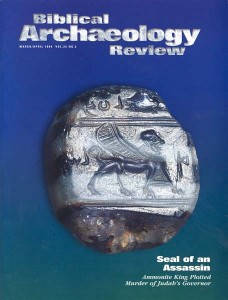First Person: Weighing the Evidence
Or lack thereof

“Absence of evidence is not evidence of absence.” This aphorism is often chanted by those who challenge a conclusion based on the absence of evidence.
Let’s get right down to cases. In our July/August 1998 issue (see “It’s Not There: Archaeology Proves a Negative,” BAR 24:04), Margreet Steiner argues that there was no city of Jerusalem at the time King David supposedly conquered it. One of her bases for this conclusion is the absence of evidence. As she put it, “Negative evidence is sometimes just that: evidence that there was no settlement.”
Jane Cahill, responding in the same issue, says that the sparse remains “are merely negative features of the archaeological record; they are not negative evidence, that is, they are not ‘evidence that there was no settlement.’”
In a letter to the editor published in the November/December 1998 issue (see Queries & Comments, BAR 24:06), Professor Kenneth Mull, quoting the “basic principle that ‘absence of evidence is not evidence of absence,’” writes that Dr. Steiner’s argument is a “wonderful example” of the “misuse of negative data.”
Who’s right? Answer: It all depends. Nothing, it seems, is as simple as it seems. But in this field we must learn to live with complexity as well as uncertainty.
Already a library member? Log in here.
Institution user? Log in with your IP address.

